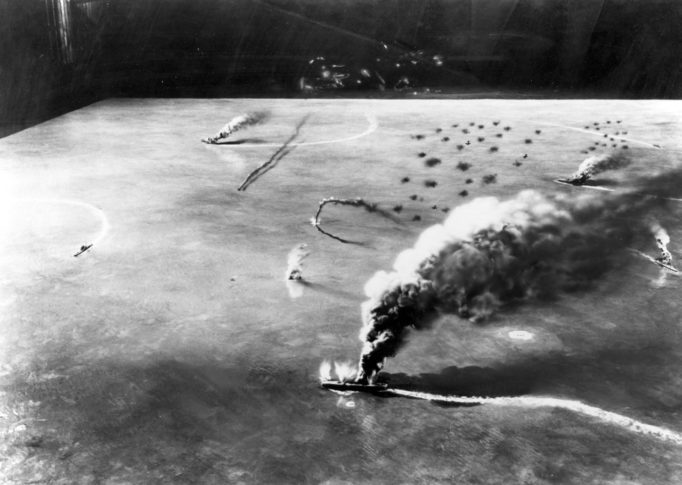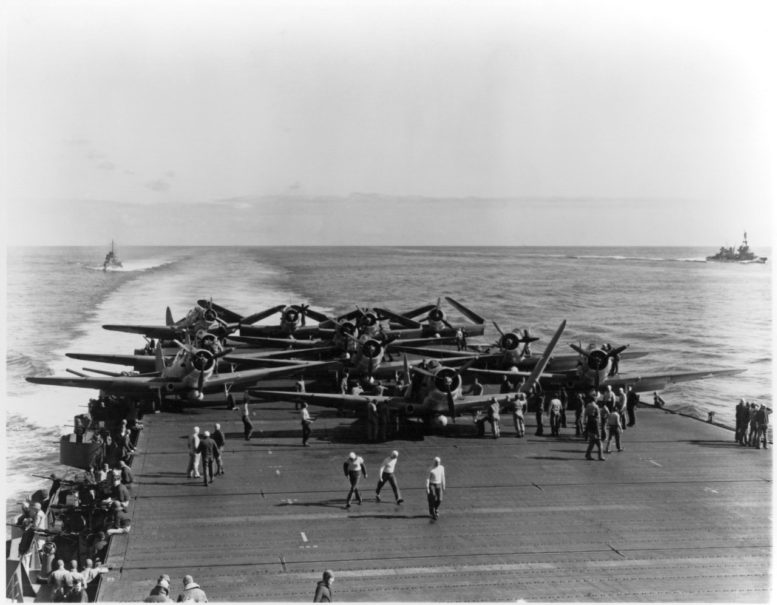A colleague posted about having seen the movie Midway, just released last week, and suggested that it is a good movie to watch. While on a 4-day layover at SBMA, part of a long-planned participation in Anvaya Cove’s annual Pawikan Cup, I decided to check it out and behold! It was playing at Ayala Mall’s Harbor Point at the former US Naval Base.

It was a movie planned for release prior to US Veterans Day, set on the day World War I ended in 11-November-1919. (The US Embassy commemorates this every year at the US Military Cemetery at the BGC)
As Time described it,
Director Roland Emmerich’s new movie, Midway, out Friday, is based on the true story of the Battle of Midway Island. Fought June 4 through 7, 1942, the U.S. victory at Midway is considered by many as the moment when the U.S. regained its military dignity six months after the Japanese bombed Pearl Harbor on 7-December-1941.”
This new movie has been cast by its creators as an attempt to restore cinematic dignity to the historic battle; another Hollywood film called Midway came out in 1976, but has been criticized for casting actors much older than those who fought the battle, putting events out of sequence and recycling footage from earlier movies about the war. So the filmmakers wanted to give this major turning point in World War II the major motion picture it deserved.
“The Pacific campaign is long and complicated, and gets overshadowed, in our attention, by what was happening in (sic) with the Nazis in Europe,” says screenwriter Wes Tooke. “But it’s an amazing comeback story. I hope that the movie relaunches an interest in learning about Midway.”
(The above quotes are from https://time.com/5711705/midway-movie-true-story/ and much of the information that follows are derived from reading that item.)
I have been an admirer of many personalities that were there in that significant battle as well as most of the campaigns and battles of that period. After all, I studied World War II from the naval point of view mostly, including having an instructor in Naval History who served in the Pacific Theater during the war. Likewise, in the mid-50s, the series Victory at Sea was being shown and I watched many episodes of it when able. One such hero in my mind was VADM Raymond A Spruance (later ADM), who orchestrated the US side of the Battle of Midway and the Philippine Sea, temporarily replacing VADM William “Bill” Halsey (later ADM), who was asked by COMPACFLEET, ADM Chester Nimitz to “go to sick bay” due to a skin ailment, and he reluctantly acceded).
Spruance became US Ambassador to the Philippines in 1952, and was still the Ambassador when I went to PMA in 1955. He could have been a 5 star Admiral, towards the end of the war but the last slot given by the Navy for the 4 allowed by Congress went to the other finalist, Adm “Bill” Hallsey. According to Thomas Buell in The Quiet Warrior (1974), Spruance’s reaction to that choice was: “So far as my getting five star rank is concerned, if I could have got it along with Bill Halsey, that would have been fine; but, if I had received it instead of Bill Halsey, I would have been very unhappy over it.”

How important was the Battle of Midway in World War II?
After the war, many AFP officers remember Midway as a stop in the long hop to the Continental US. Prop-driven Douglas DC-4s and later Boeing Constellations had to refuel often, and Midway was the last one before Hickam AFP in Honolulu. The Midway Islands are part of the Hawaiian archipelago, located northwest of Honolulu, but not part of TH (Territory of Hawaii, now a State) annexed by the US in 1867, taken over by the Navy in 1903, purportedly to provide logistics closer to the Philippine Islands, which was important as a US foothold in Asia.
The movie showed clearly how in early 1942, U.S. Navy cryptanalysts had learned about Japan’s plans for a big attack in the Pacific “at a place yet unknown” to them but later confirmed when the US base at Midway sent out a false message that it was short of fresh water, and Japan inadvertently mentioned that in a directive, confirming that the location for the attack was Midway. US Naval intelligence also concluded that the date was June 4 or 5 and reasonably obtained the order of battle of the Japanese striking force.
The Japanese considered Midway Island in the mid-Pacific, which lies 1, 300 miles northwest of Pearl Harbor as next in importance to Pearl Harbor to U.S. operations in the Pacific. If captured, Midway would be their stepping-stone to Pearl Harbor, the Alaska Territory and the Continental U.S.
But Midway was ready, not so much as its island defense forces but the strength of the forces around Midway, yet unknown to the Japanese. Marine Corps fighters, Army bombers, were ready to track fleeing Japanese zeros back to their carriers; Navy dive bombers and torpedo planes and fighters, pursued returning planes back to the Japanese main force. It was a victory.
As radio silence was in effect, the complete result was not clear to U.S. headquarters in Pearl Harbor. Admiral Chester William Nimitz and the Army Pacific Commander Lt. General Delos Carleton Emmons had to wait for reports from planes arriving from Midway. Initial reports to Washington were cautiously worded, and even the Battle Report was not impressive:
As Time reported on the message:
A momentous victory is in the making…Pearl Harbor has now been partially avenged. Vengeance will not be complete until Japanese sea power is reduced to impotence. We have made substantial progress in that direction. Perhaps we will be forgiven if we claim that we are about midway* to that objective. The battle is not over…”
Critically, four of Japan’s six aircraft carriers sank. In terms of manpower, according to the WWII museum, the Japanese lost 3,057 men, while the U.S. lost about 362 men. In terms of war assets, the Japanese also lost a cruiser and hundreds of aircraft, while the U.S. lost a carrier, a destroyer and 144 aircrafts.
Two of the great admirals participated in Midway, “and they complemented each other perfectly,” wrote Time in its review of the movie:
As Citino describes them, William “Bill” Halsey (played by Dennis Quaid) was “the spirit of the U.S. Navy,” known for “always charging ahead” and his aggressive war maneuvers, even if that meant sailing into a typhoon. However, he didn’t get to command during Midway because he had to receive medical attention for a skin condition. Chester Nimitz (Woody Harrelson) was one of the war’s top planners, known for his cerebral approach. Lt Colonel Jimmy Doolittle (Aaron Eckhart) became famous for the bombing of Tokyo two months prior, now known as the Doolittle Raids. To make sure Japan wouldn’t be caught off guard like that again, the Imperial Japanese Navy kept expanding in the Pacific and thus zeroed in on Midway, leading to the great battle in June.
Rear Admiral Edwin Layton (Patrick Wilson) was a naval intelligence officer to Nimitz who played a key role in figuring out that the Japanese had their eye on Midway. After that battle, he received the Distinguished Service Medal because he “analyzed and precisely evaluated the capabilities and intentions of the enemy’s air, sea and ground forces” and provided “timely and accurate intelligence information, vital to the security of our fighting forces and essential to their successful operations, contributed inestimably to our victory over the enemy.” His story became more well known after his memoir “And I Was There” that came out in 1986, two years after his death.
And of course VAdm Raymond A Spruance, as I described earlier.
Time also describes the significance of the Battle of Midway:
At one stroke, the dominant position of Japan in the Pacific was reversed, British Prime Minister Winston Churchill wrote in his post-war account of World War II. “The annals of war at sea present no more intense, heart-shaking shock than these two battles, in which the qualities of the United States Navy and Air Force and of the American race shone forth in splendor.”
“The second six months of war last week began for the U.S. at the point where the first six months should have started,” Time reported in its 22-June-1942 issue. “The loss of the Philippines, of Guam and Wake, had not been undone. But Midway was what Pearl Harbor should have been. The two canceled out. In three days of concentrated destruction off Midway, the U.S. had restored the balance of Pacific naval power. Thus for the U.S. began Phase II of the war.”
Critically, for Americans who feared a repeat of Pearl Harbor, Japan “lost much of her Navy’s striking power at sea,” the story noted. “Without that power, Japan cannot bring the war to the U.S. or even to the remaining U.S. strongholds in the Pacific.” Military leaders in Washington knew Midway was an “essentially defensive” victory and “a crippling, but not a knockout blow.” As a top Navy official in Washington D.C. put it, “I would not say that they [the Japanese] have been defeated yet; they have ‘withdrawn.’
The use of B-24 bombers figured in the preliminary operations prior to the Battle of Midway. That exploit of the Doolittle Raiders in April 1942 added to the desire of the Japanese to neutralize Midway to be rid of threats southeast of Japan, as well as their strategic plan to invade Hawaii. But moreover, it gave them a sense of vulnerability and the fear that final victory might not be theirs after all.
Time also reported that on 21-October-2019 a research vessel, operated by the late Microsoft co-founder Paul Allen’s Vulcan Inc., had discovered two of the Japanese carriers that sunk during the Battle of Midway.
Those were not the only ones found by Allen. Five years ago, he visited the Philippines and uncovered the wreck of the 70,000-ton super battleship Musashi, sank by an aircraft carrier in the Battle of Sibuyan Sea. The Maritime Forum was given an account of that recovery during MF 101 at MAAP on March 2015 by the Romblon Cultural Heritage Association (ROCHAI). Retired PNP BG Dominador Resos Jr, who initiated the establishment of the Romblon War Memorial and called attention to the need to locate the wreck of the Musashi, organized the group. Another report just came in last week of another sunken World War II vessel found, which had figured in the Battle of the Philippine Sea in October 1944.
Which battle will be the sequence to the Midway movie named as their next project together with a message citing the Philippine Army-USAFFE defenders of Bataan and Corregidor for delaying the Japanese timetable by 3 months that, in turn, contributed towards enabling the US to better prepare for the long war?
